Replacement of a geyser in an apartment: replacement paperwork + basic norms and requirements
Gas water heater refers to a fairly durable household appliances. With proper use, it is able to last up to 15 years or more. But in practice this period may be shorter, which entails the need to purchase new equipment. This is due not only to the physical deterioration of the nodes, but also to the obsolescence of the apparatus.
You, like most owners, replacing the gas water heater in the apartment raises many questions and doubts about the correctness of the action, right? What norms and requirements must be observed so as not to violate the law and not endanger one’s life and property?
In this article we will give tips and advice on replacing a gas water heater, preparing the necessary documents, and helping to avoid errors and miscalculations when installing the device. We will supply our material with diagrams, examples of documents and visual photos, as well as videos.
The content of the article:
Basic norms and requirements
Since the device uses high-risk fuel, strict rules and regulations are imposed on its installation and operation. By law, all work, from making changes to the project to connecting the column, must be performed by organizations or specialists licensed for this type of activity.
With the correct execution of technical documentation, the fulfillment of all requirements and conditions, the dismantling of the old and the installation of a new column are not very difficult.

Technical specifications for the installation of a water heater are dictated, first of all, by the safety of using gas equipment.The norms and requirements for replacing the old gas column with a new one are stipulated by the manufacturer's instructions, building codes and gas supply rules SNiP 2.04.08-87 *.
No. 1 - room requirements
A gas-fired gas heater is installed in the kitchen or in another non-residential building with a volume of at least 7.5 cubic meters. m, in the presence of air flow through the ventilation grille with an area of 0.03 sq.m.
The erasability of the structure also depends on the size of the windows. This means that in the event of an accidental explosion of a gas mixture with air, excess pressure is neutralized through windows, doors or other provided elements without destroying the building.

The required window area depends on the thickness of the glass and is determined as follows:
- with a thickness of 3 mm, the area should be at least 0.8 m2;
- for 4 mm - at least 1 m2;
- at 5 mm - from 1.5 m2.
Only the area of the glazing itself, without frames, should be taken into account. The ceiling height must be at least 2 m (with an inclined ceiling of 2.2 m) for appliances up to 60 kW, and from 2.5 m for equipment of greater power.
When replacing an old column in the bathroom, it is permissible to install it in its former place, although in cases of initial design, according to modern standards, this is prohibited.
It is also necessary to take into account that increased humidity leads to corrosion of components and reduces the life of the device. In this case, the replacement is best done with the transfer of the water heater to a new, more suitable place.
No. 2 - standards for the location of the column
In the passport for the gas column or installation instructions, as a rule, the manufacturer indicates the required distances from the device to the building structures of the room. If there are no such instructions, the gas heater is installed based on ease of use, installation, of service and repair.
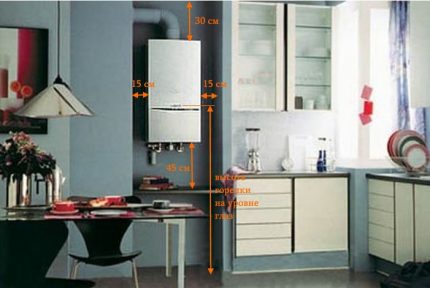
Installation must be carried out in compliance with the distance from the wall of the mount, depending on its fire-fighting properties:
- from non-combustible materials - not less than 2 cm;
- from hardly combustible, combustible, protected by sheet steel, asbestos from 3 mm, plaster, etc. - at least 3 cm.
The dimensions of the thermal insulation must exceed the dimensions of the column by at least 10 cm around the perimeter and 70 cm from the top. The distance to the nearest structures, walls, objects should not be less than 15 cm on both sides of the device. If installation with a reduced clearance is allowed in the data sheet of the device, it is necessary to provide for the protection of adjacent surfaces with non-combustible materials. But in any case, the clearance should not be less than 3 cm.
The location of the burner window should be approximately at eye level. If a gas heater is installed in the passage, then at least 1 m of free space should be provided around it.
No. 3 - ventilation and chimney requirements
The chimney should ensure the complete removal of combustion products in a natural way with the following distribution of volumes:
- exhaust hoods - at the level of 3-fold air exchange in one hour;
- air inflow from the room - not less than the total amount of exhaust and air expended on gas combustion.
For equipment over 60 kW, an additional dimensioning of ventilation devices is performed.
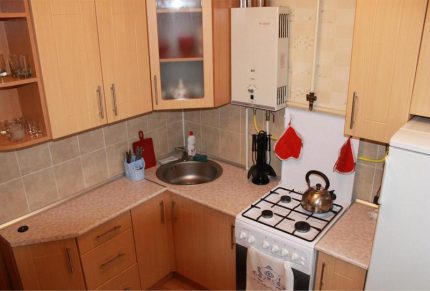
Galvanized or stainless steel is recommended as a chimney material.By type of execution, it can be a sandwich pipe, corrugation or coaxial chimney in the case of a turbocharged water heater. Do not use aluminum corrugation due to its susceptibility to rapid burning.
The total length of the pipe, from the top of the column to the opening of the chimney channel in the wall, should not exceed 3 m. In this case, it is necessary to observe the maximum number of turns at right angles - no more than two. If there are more, then you should subtract 1 m from the total length for each turn of 90 degrees and 0.5 m at an angle of 45 degrees.
The length of the vertical acceleration section of the chimney at the outlet of the column should be at least 25 - 30 cm with a ceiling height of up to 2.7 m. In rooms with a higher ceiling, it is recommended to increase it to 50 cm. The horizontal part is mounted with a minimum slope up to 2 degrees.
No. 4 - requirements for gas supply hoses
When replacing the supply pipes, geyser hoses, it is necessary to take into account the requirements of the gas inspection for their type and material of manufacture.
Flexible gas hoses there are rubber, metal braided, bellows stainless steel and polymers, PVC. The main criterion for the right choice is the presence of a yellow sticker or coloring and certificate. To avoid fakes, it is recommended to buy them in specialized stores. The most preferred option is a bellows sleeve or PVC hose.
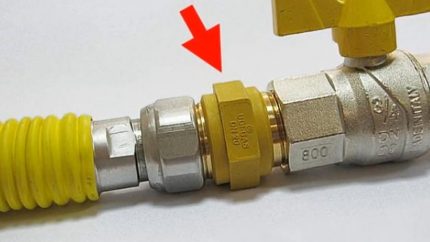
The length of the inlet gas hose should not exceed 1.5 - 2 m with an internal diameter of 15 mm. It must not be abruptly bent or pulled. At the point where the bellows hose is connected to the gas pipe, insulating adapters must be installed to protect against stray currents and discharges of both the device itself and the gas pipeline.
The procedure for paperwork
If the installation of a new geyser is planned to the same place and its capacity does not exceed the old one, then such a replacement is carried out according to the sketch, within the framework of the existing project.
To do this, you need the following list of documents and their copies:
- Gas supply project.
- Certificate confirming ownership of the apartment or house. For the private sector, an act on the right to use a land plot.
- The registration certificate of the apartment or house.
- The act of checking the condition of the smoke and ventilation ducts. To receive it, an application is preliminarily filed with a service authorized in your region (housing and communal services, Ministry of Emergencies, firefighters).
- The registration certificate of the new water heater.
- Application for replacing a gas column without changing its location and capacity.
Requirements may vary by region.
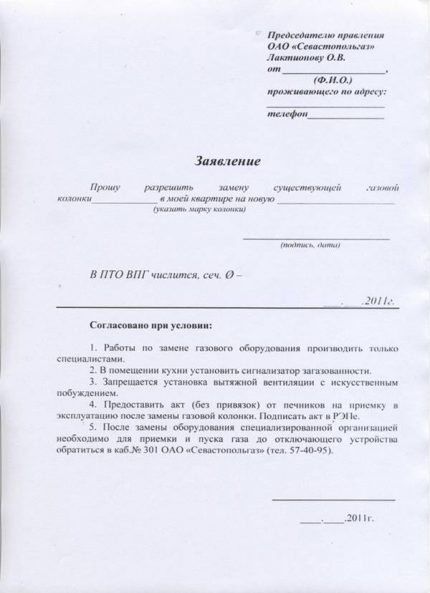
In all other cases, for example, when you need to move the column to another place or put a more powerful water heater, you need to develop a new project.
The necessary documents are collected in the following order:
- Obtaining an act of inspection of the chimney.
- Submission of an application to gorgaz (or another specialized organization with which an agreement is concluded) to receive technical conditions for the replacement of a gas water heater.
- After their manufacture, it is necessary to find a design organization to create a project.
- Then the received documentation is agreed in the metrological and technical department of the gas economy.
- 5 days before the start of work on replacing the column, you must submit an application for technical supervision. At this stage, it will be necessary to present an act on the condition of the chimney.
- Installation work to replace the water heater is carried out by a licensed organization.
- Connection to the gas system and commissioning of a new column is made by a representative of gorgaz.
At the final stage, the following list of documents will be on hand: a project, an act of putting into operation a gas device, an act of checking a chimney.
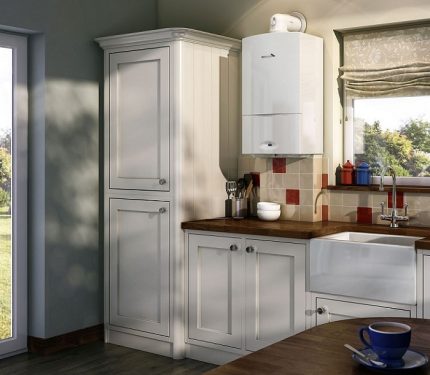
Going through the paperwork may seem like a fairly long-term and costly procedure. But the competition that has appeared in recent years on the market for the provision of maintenance services for the VDGO and VKGO helps to accelerate and simplify it. In addition, all attempts to circumvent it, in most cases, are even more expensive.
Who is allowed to replace the speaker?
Often, for the first time faced with the need to replace a gas water heater, its owners have a fair question: is it possible to connect a new gas column instead of the old one?
The unequivocal answer to it is given by the Decree of the Government of the Russian Federation No 410 dated 05/14/2013, which says that self-replacement of gas equipment is prohibited. It should be produced only by specialized organizations with which contract signed for maintenance of gas appliances. Lists of companies with which such an agreement can be concluded are published in the notification registers on the regional websites of the State Housing Inspections.
A commissioning certificate must be issued for the installed gas column. In its absence, a fine of 10-15 thousand rubles is imposed. (according to Art. 7.19 Administrative Code of the Russian Federation) If unauthorized connection leads to damage to property and life of people, criminal liability may arise, as described in Criminal Code of the Russian Federation.
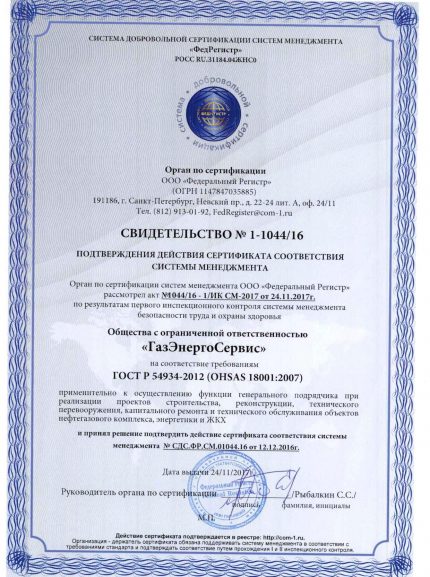
In addition, self-replacement will not allow you to put a new column on a warranty. The organization that carried out the installation makes entries in the passport of the device and seals them with a seal. Only after this, the column is considered accepted for use, delivered for warranty service.
In addition to obligations to comply with norms and requirements, owners have the right to independently choose the organization to create the project and carry out installation works. The main condition is that they have the appropriate licenses.
All work related to the gas supply system can only be performed by specialists who have the appropriate access to work with gas equipment and have passed annual certification.
Recommendations for choosing a new column
The main parameters for choosing a gas column is power and performance. They should be given priority if you do not plan to redo the project when installing the column in the same place. The power of the new device must not exceed that indicated in the design.
For a family of 1 to 2 people, a column capacity of 10 liters per minute is usually enough, which corresponds to a power of 17 - 18 kW. If the replacement of the device is connected with the desire to use two water consumption points at the same time, for example, a sink and a shower, then the gas heater should have a capacity of at least 13 l / min.
For three points, including filling the bath, you need to navigate to 15 l / min. Subject to the availability of pressure in the water supply.

Many gas water heater models have a flame modulation function.Its purpose is to maintain a constant temperature (with an accuracy of 1-3 degrees) at the outlet of the device, regardless of the flow of water. Choosing such a model will allow you not to worry about adjusting the temperature while turning on the hot water by several family members.
Prior to completing column mounting you need to check the condition of the chimney, pipelines, taps, determine which elements will require updating.
Common column replacement errors
Often when installing a water heater in a new place, lateral distances of 150 mm from the wall or other surfaces and objects are not observed.
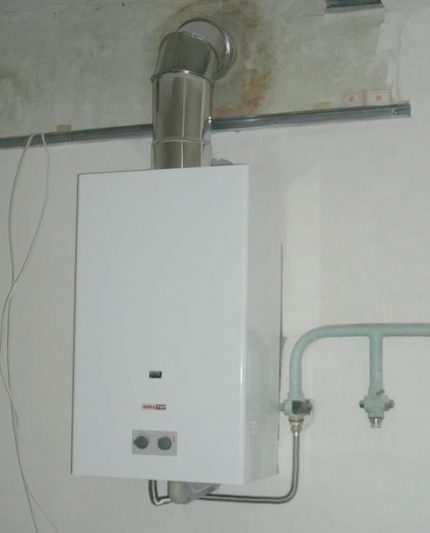
Excessive heating accelerates the wear of the heat exchanger, contributes to the formation of scale, leakage, reduces the life of the gas appliance. We recommend that you familiarize yourself with heat exchanger repair instructions.
Many errors are associated with the use of unauthorized gas supply hoses, or their incorrect connection. The desire to save on the price of such an important element can lead to unpleasant consequences.
It is known that exposure to gas greatly accelerates the drying out of rubber. If it is not intended for use in a gas pipeline or of poor quality, the hose will quickly crack, causing an unacceptable gas leak.
Sometimes, in an effort to give the most aesthetic look to the interior of the kitchen, the column is placed in wall cabinets. This arrangement, in addition to overheating the column itself, can lead to more serious consequences.

To improve air circulation, partitions should be removed from the bottom and top of the column. If the mandatory clearance of 3 cm is not observed and the fireproof materials protect the side surfaces, heating the cabinet walls can lead to carbonization and fire.
We recommend you to get acquainted with the best column disguise ideas in the kitchen that do not violate safety requirements.
Conclusions and useful video on the topic
Violation of the rules for using gas can lead to irreparable consequences. This fully applies to situations related to the replacement of gas appliances.
About how it is impossible to install a geyser, at what price incompetence turns out, how to avoid such errors and fines, is described in the video:
An example of installation work to replace the column is shown in the following video:
Tips for choosing the right gas supply hose are given in the video review:
Sooner or later, every owner may encounter the need to replace a geyser. Regardless of whether the water heater is installed in its original place or transferred to another, compliance with the specified standards and requirements will be checked by the inspector of the gas service when commissioning the device. Correctly executed documentation will relieve claims of regulatory authorities and penalties.
Want to talk about your own experience replacing a gas water heater? Or do you still have questions that we did not address in our material? Ask them to our experts and other visitors to the site, participate in the discussion, share your experience - the contact form is located below.

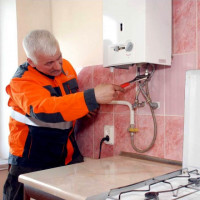 Do-it-yourself gas column installation in an apartment: requirements and technical standards for installation
Do-it-yourself gas column installation in an apartment: requirements and technical standards for installation 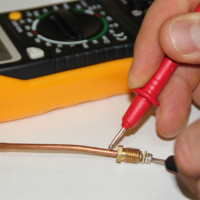 Thermocouple for a gas column: design and principle of operation + self-inspection and replacement
Thermocouple for a gas column: design and principle of operation + self-inspection and replacement 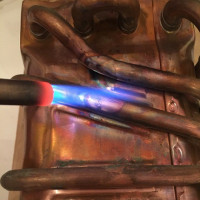 Do-it-yourself repair of a gas column heat exchanger: the main stages of soldering a copper radiator
Do-it-yourself repair of a gas column heat exchanger: the main stages of soldering a copper radiator 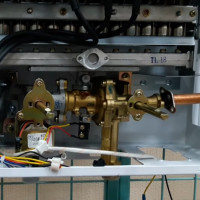 Repair of a water column of a geyser: assembly of a node, major breakdowns and detailed instructions for repair
Repair of a water column of a geyser: assembly of a node, major breakdowns and detailed instructions for repair 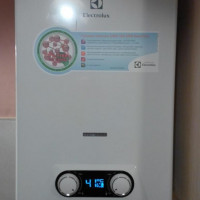 Electrolux Geyser Troubleshooting: Diagnosing Popular Breakdowns and Troubleshooting
Electrolux Geyser Troubleshooting: Diagnosing Popular Breakdowns and Troubleshooting 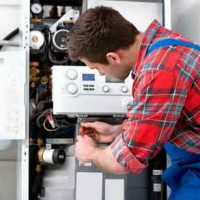 How to replace the gas column membrane: reasons + repair instructions
How to replace the gas column membrane: reasons + repair instructions  How much does it cost to connect gas to a private house: the price of organizing gas supply
How much does it cost to connect gas to a private house: the price of organizing gas supply  The best washing machines with dryer: model rating and customer tips
The best washing machines with dryer: model rating and customer tips  What is the color temperature of light and the nuances of choosing the temperature of the lamps to suit your needs
What is the color temperature of light and the nuances of choosing the temperature of the lamps to suit your needs  Replacement of a geyser in an apartment: replacement paperwork + basic norms and requirements
Replacement of a geyser in an apartment: replacement paperwork + basic norms and requirements
When checking (general), the employee wrote that it is necessary to replace the gas column by age (it was installed 30 years ago). The column is working. Question to experts: is such a record logical when the column is working normally?